巻号一覧

21 巻, 7 号
選択された号の論文の4件中1~4を表示しています
- |<
- <
- 1
- >
- >|
-
伊佐 重輝1972 年21 巻7 号 p. 295-301
発行日: 1972/07/15
公開日: 2009/11/25
ジャーナル フリーPDF形式でダウンロード (1051K) -
C6-アミン類から見た有機インヒビターの吸着機構藤井 晴一, 宮本 健三1972 年21 巻7 号 p. 302-308
発行日: 1972/07/15
公開日: 2009/11/25
ジャーナル フリーInhibition and stimulation effects of organic compounds on corrosion of mild steel in acid media were studied, adopting alkyl amines containing 4 to 16 C-atoms, C6-acid amide and their N-dimethyl derivatives. Inhibition efficiency was calculated from corrosion rates determined in 5% HCl with and without inhibitors at 50°C by weightloss measurements.
Inhibition by alkyl amines enhanced with increasing number of carbon atom in alkyl group. Primary amines of C12 to C16 were better inhibitors than their corresponding N-dimethyl derivatives, while C4 to C8 primary amines were worse than the corresponding N-dimethyl ones.
Inhibitors which have active hydrogen attached to N-atom can be associated by hydrogen bond. The inhibition of the associated was observed to be lower than that of the dissociated. The dissociated inhibitors with the active hydrogen were more inhibitive than their N-dimethyl derivatives. These results suggest that the former inhibitors are adsorbed on metal by hydrogen-bridging with their active hydrogen.
Organic corrosion inhibitors are presumably adsorbed on metal by electron-donation and proton-donation as M: NH2R and M: HNHR. Water molecule also seems to be adsorbed in the similar manners as M: OH2 and M: HOH. Water of M: OH2 is removed by formation of hydrogen bond with N-atom of amine, because water removed from iron was detected during the adsorption of N-dimethyl amine on iron in nonaqueous solution.
The corrosion of iron was accelerated by the addition of minute amount of N-dimethyl amine to aqueous acid media. It may be concluded that the removal of the water from iron and subsequent adsorption of tertiary amine occurs as follows.
Since the active sites on metallic surface are highly electron-accepting as shown in (A), the reaction of the metallic surface is stimulated with the limited amount of corrosion inhibitors.抄録全体を表示PDF形式でダウンロード (758K) -
玉田 明宏1972 年21 巻7 号 p. 309-316
発行日: 1972/07/15
公開日: 2009/11/25
ジャーナル フリーAtmospheric corrosion testing of 117 low alloy steels was conducted for 8 and 12 years in industrial and rural sites in Japan. In the industrial site carbon steels corrode 4 times more than those in the rural site. These results show the following tendency about the effect of the alloying elements.
Industrial site: P>Cu>Mo>Cr>Si
Rural site: P>Cu>Si>Cr>Ni
From these data the effect of alloying elements is quantified by multiple regression analysis. Also, the formula between weight loss and exposure year is obtained as Y=A⋅exp(B/X)⋅YC and the corrosion loss for 20 years exposure is estimated. The surface rust of the weathering steels is thin uniform layer and has less crack or pore, but alloy rich, special structured layer is not detected in the rust by X-ray diffraction, chemical and EPMA analyses and polarized-light microscopy.抄録全体を表示PDF形式でダウンロード (2955K) -
電子顕微鏡による研究C. J. Cron, J. H. Payer, R. W. Staehle, 島田 春夫1972 年21 巻7 号 p. 317-330
発行日: 1972/07/15
公開日: 2009/11/25
ジャーナル フリーPDF形式でダウンロード (4236K)
- |<
- <
- 1
- >
- >|